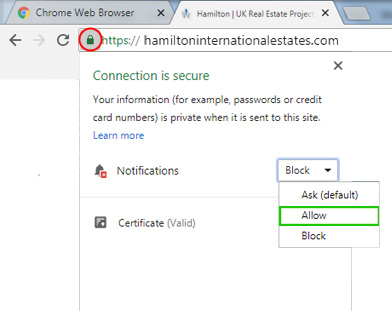US vs. UK Mortgages - Decoding the Differences
27 Jul 2024
Buying a dream house is a big decision on both financial and emotional levels. So, managing the mortgage market can be challenging, especially when contrasting systems between national boundaries. Your choice can be New York City's hectic streets or rural England's quaint village.
However, taking a mortgage is essential when buying a home. The financial systems of the US and the UK differ widely from one another. Knowing these differences will allow you to land your dream house.
Mortgage Products
US Mortgages
The majority of US mortgages have fixed rates. This means that the interest rate stays constant for the duration of the loan. Which can be anywhere from ten to thirty years. Because of this steadiness, homeowners are able to budget their monthly expenses.
Also, there are adjustable-rate mortgages (ARMs), in which the interest rate is set for a predetermined amount of time and then fluctuates on a regular basis in response to changes in the market.
US Mortgages:
-
Most common: Fixed-rate mortgages (30 years most popular)
-
Benefit: Stable monthly payments for the entire term
-
Option: Adjustable-rate mortgages (ARMs) - interest adjusts periodically
UK Mortgages
In the UK mortgage market, there are many options, including fixed-rate mortgages, variable-rate mortgages, and tracker mortgages. Fixed-rate mortgages in the UK typically have two, three, or five years maturities. A tracker mortgage fluctuates with the Bank of England's base rate.
Common variable-rate mortgages include the lender's Standard variable rates (SVRs) and discount mortgages, which reduce the lender's SVR for a certain time.
UK Mortgages:
-
Wide variety: Fixed-rate (2, 3, or 5 years), Tracker (linked to Bank of England base rate), Variable-rate, Discount (discounted SVR)
-
Fixed-rate mortgages are popular but for shorter terms than the US.
-
Tracker mortgages follow the Bank of England's base rate, leading to fluctuating payments.
Mortgage Terms and Conditions
Interest Rates and Fees
US mortgages frequently have greater up-front costs, and long-term interest rates stay constant. Another distinctive feature of the US market is points, which are costs paid at closing to the lender in return for a lowered interest rate.
US Mortgage Fees: Closing costs in the US generally range from 2% to 5% of the loan amount. On the other hand, mortgage fees in the UK are typically lower at first. Still, borrowers should be advised that their expenses could increase if they refinance or transfer products after the initial term.
UK Mortgage Fees: Initial mortgage fees in the UK are often around 1% to 2% of the property value.
Charges for Paying Off Debt Early
The majority of US states do not charge early repayment penalties, so homeowners can pay off their mortgages early without incurring large costs.
On the other hand, early repayment charges, or ERCs, are sometimes included in UK mortgages, particularly in the initial fixed or discounted term.
Percentage of Mortgages with Early Repayment Charges: US - Less than 10%, UK - Over 50% (Source: Consumer Financial Protection Bureau, Money Saving Expert)
Application and Approval Process

Credit Scoring and Underwriting
Mortgage approval and negotiation are heavily influenced by FICO scores, which are part of the US's intricate credit scoring system. A borrower's creditworthiness is determined by their scores, income verification, and debt-to-income ratios.
-
US Credit Scoring: The average FICO score for approved mortgages in the US is around 760.
-
UK Credit Scoring: UK lenders look for a credit score of 700 or above for the best deals.
While affordability is a major consideration for lenders in the UK, credit ratings are still crucial. Here, we take a look at the borrower's income, outgoings, and general financial health. When applying for a mortgage in the UK, the applicant's age and work status are also given extra attention.
Market Dynamics and Regulations
Regulatory Environment
Many organizations oversee the US mortgage industry, and government-backed firms like Freddie Mac and Fannie Mae are crucial to preserving stability and liquidity. These groups also support the standardization of mortgage products.
The Financial Conduct Authority (FCA) oversees the regulatory environment in the UK to protect customers and preserve market stability. While there are no government-backed companies in the UK market like there are in the US, initiatives like Help to Buy and shared ownership plans help first-time buyers and those with lower down payments.
Expert Insights
Damian Youell, a mortgage broker from NeedingAdvice.co.uk, notes, “The UK mortgage market's diversity in product offerings means borrowers must be more vigilant about terms and conditions, especially regarding rate changes and potential fees during remortgaging periods.”
Nicholas McMillan of Century 21 Hire Realty, highlighted the importance of understanding local market nuances: “When moving from the US to the UK, we were surprised by the prevalence of short-term fixed-rate mortgages and the necessity to frequently remortgage, which is less common in the US.”
US and UK mortgages are complicated and require careful consideration. Buy a property in either country, but compare financing, down payments, closing costs, and government subsidies to make an informed decision.
Consider these items and receive expert guidance to increase your chances of acquiring a mortgage that suits your budget and lifestyle. You must research and assess your options before buying, whether in the US or UK.
Categorised in: All News












